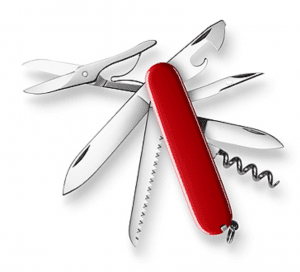
So far, I helped numerous clients with the construction of their opening repertoire (click here). Bevor I show you the underlying principles, let’s have in mind why the opening is so important. It does no less than deciding about
- who starts with a positional advantage in the middlegame
- who catches who empty-handed
- who has the psychological initiative
- who has more time on the clock
- who succeeds in aligning the position with his style, skills and knowledge
Now, let’s move on to the principles which guide the construction of a repertoire. As you will see, some of the points overlap or refer to each other.
1. Quality
This is an important point for the ambitious player.
- Try to equalize with Black.
- Try to get += with White.
- Only play lines which are made to last. If you learn bad openings which you will have to abandon at some point, you waste Elo-points and energy.
- Put your opponent under pressure from the very first move. This can can happen by active play, by collecting substantial advantages or by establishing complex pawn structures.
- Stay on the solid foundation of the classical chess principles. Only play modern openings of the highest category (click) and don’t abandon space without a very good reason.
2. Positional Depth
This is linked to the previous point and specifically addresses ambitious players.
- Use your openings as a tool to grow your overall chess understanding.
- Don’t limit your repertoire to only a couple of pawn structures.
- Try to avoid shallow position types.
3. Resource Orientation

Every opening repertoire should be adjusted to the individual requirements and capacities. This is even more important than looking for quality. Hence, don’t get ahead of yourself and entertain openings above your pay grade. Align your repertoire with
- your available time
- your memory skills
- your tactical skills
- your positional skills
- your playing style (grinder, puncher, universal etc.)
4. Winning Potential
If you are an ambitious player, you must be able to play for a win.
- Play demanding lines, which put your opponent under positional pressure.
- Your Black-repertoire should contain imbalances (= winning ideas).
5. Versatility
It was never easier to learn openings as it is today. Many sources offer turnkey repertoire solutions. From a different perspective, however, things have become more difficult. Your average opponent is much better informed than 20 years ago. If you don’t adjust to the rising standards, you will fall behind. As a result, your repertoire has to be much broader than in the past.
- Don’t be a sitting duck for your opponent’s game preparation. Be the one that surprises your opponent, not vice versa.
- Have different openings prepared, with which you can either play for a win or a draw.
- It is okay to play sharp variations, if you have time to prepare for the game. But also have robust alternatives available, which you can play as a default solution in case you meet your opponent unprepared.

6. Efficiency
This topic is more important for amateurs, but also professionals don’t want to waste their time.
- Play openings which rely on the understanding of principles and logic rather than on memorizing long variations.
- When having the choice between two equivalent mainlines, choose the one with the lesser game frequency.
- Try to search for undervalued sidelines, which don’t require a lot of learning.
- Pick opening where it is you who decides which way to go at mayor branches, not your opponent.
- Choose openings which include the knowledge of only a couple of pawn structures.
- Have in mind that 1.d4 is far more easy to learn than 1.e4 (click).
7. Learning Methods
Making the choice for the right content is one thing. The same important, however, is how you get it into your head. It is better to play a second-tier opening you understand (after applying the proper learning methods), than playing a top-tier opening you don’t understand.
- Put your focus on understanding the opening logic rather than on learning lines by rote.
- Try to know all you can about pawn structures and the involved ideas.
- Don’t stop at move 12, but also learn how a position unfolds in the middlegame.
- Try to get hold of digital data or digitize books yourself. That way, the material can evolve and you will also be able to repeat it quicker and more often. As an ambitious tournament player, you also need your repertoire on your notebook, when preparing for the game in your hotel room.
- Gather experience in online games and analyze them afterwards.
